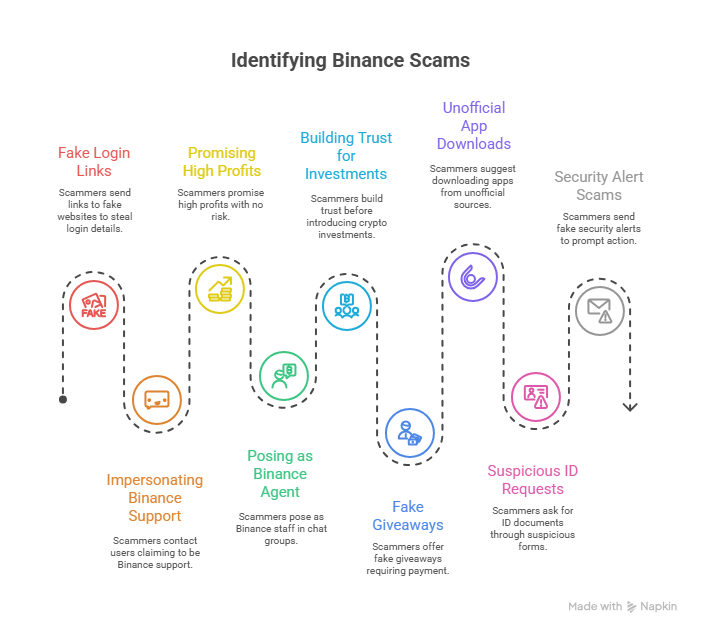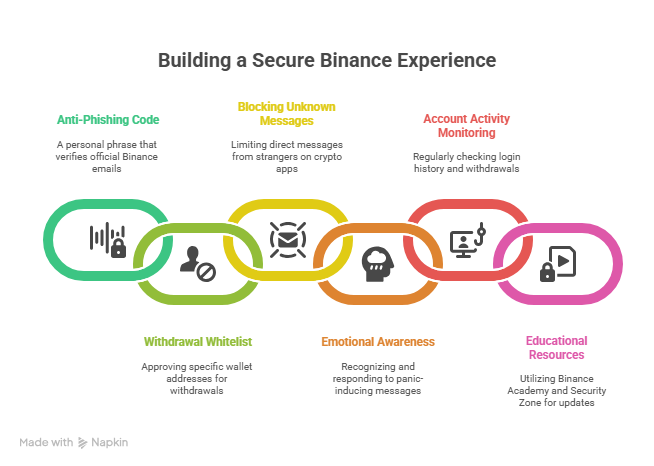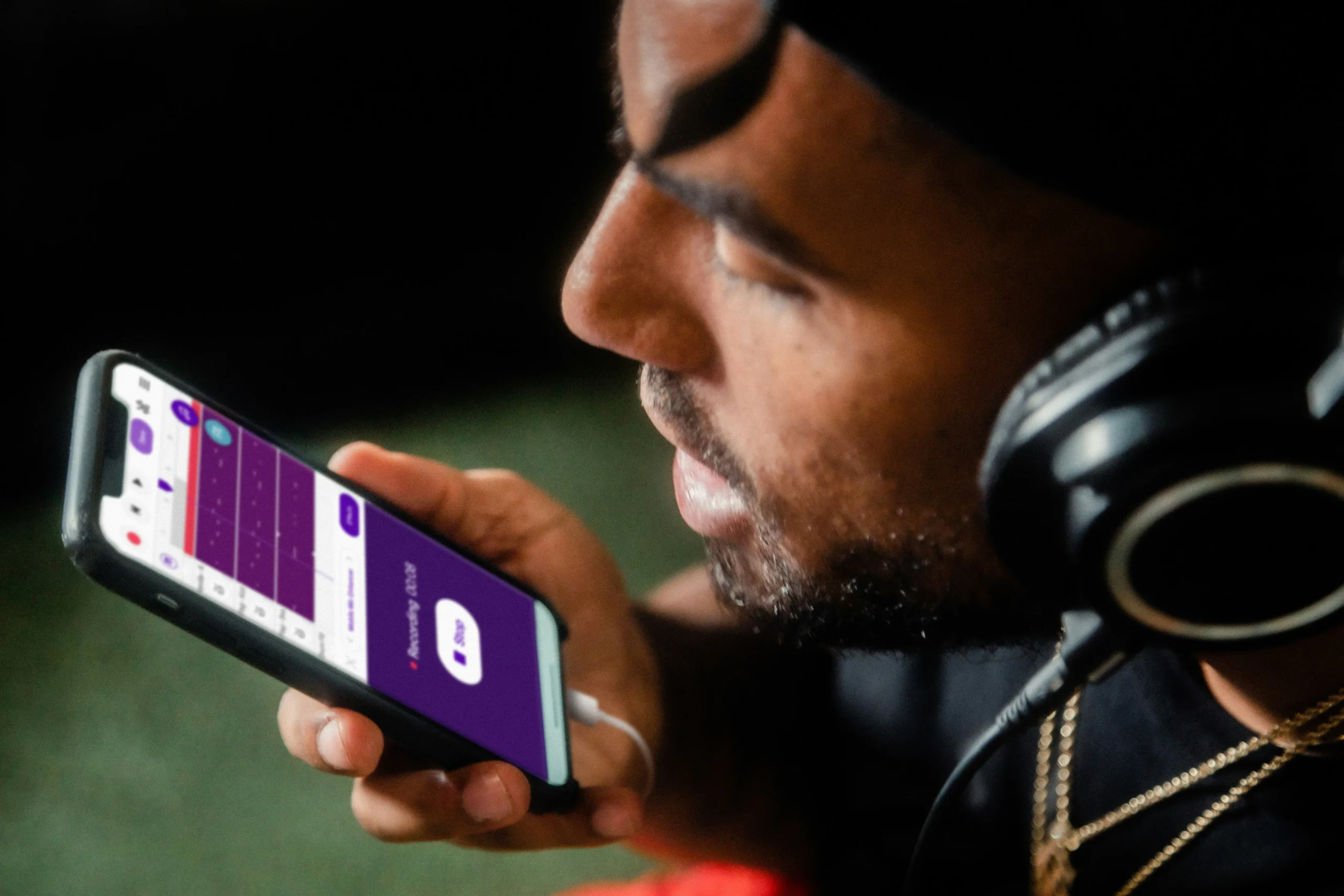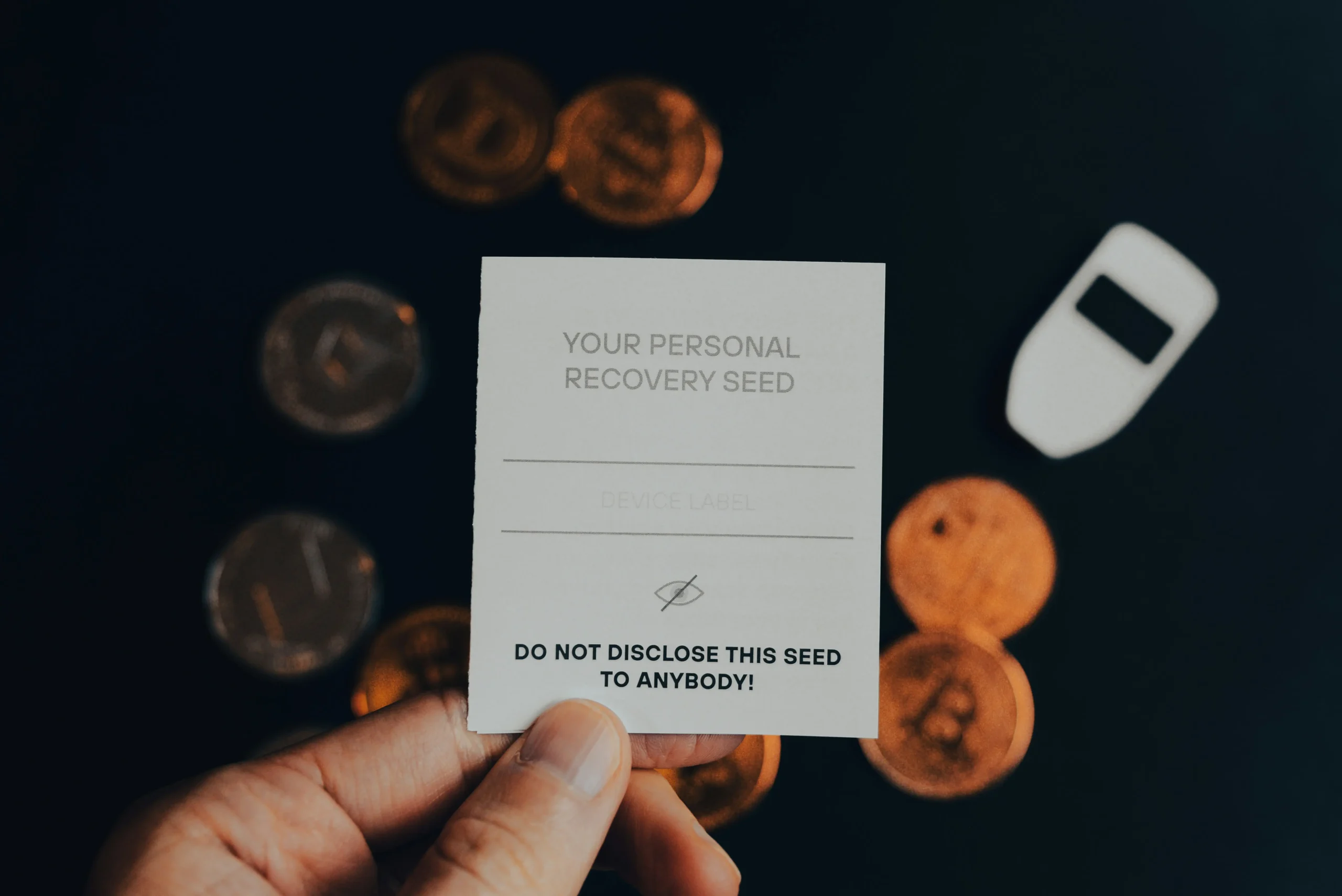Binance is one of the most popular crypto platforms, which makes it a frequent target for fraud. Scammers often pretend to be part of the company to gain trust and steal from users. A typical Binance scammer might create fake support profiles or promote fake investment offers, all designed to get access to your money or personal information.
In this post, we break down scam types Binance users face, explain how each scam works, and give you useful prevention tips to help you protect your account and assets from serious risks.
Need support after a scam? Join our community today.
What Is a Binance Scammer and How Do They Trick People?
A Binance scammer is someone who pretends to be connected to the Binance platform to steal from users. They may act like official support agents, create fake websites, or send messages that look like they’re from the company. Their goal is always the same: to get access to your account or your crypto.
What makes these scammers dangerous is how real they can seem. They often use the Binance logo, copy the tone of Binance emails, and even create fake social media pages that look official. Many people trust these messages because they look professional and urgent. These con artists use techniques such as:
- Creating a sense of emergency, such as “Your account has been locked. Act now.”
- Asking for private information, like login codes or wallet phrases.
- Promising free crypto or huge returns if you send money first.

9 Warning Signs That You’re Dealing with a Binance Scammer
Binance scammers use a variety of methods to trick users, but once you know what to look for, it’s usually easy to spot them. Many of these scams follow a similar pattern: they create a sense of urgency, confusion, and pressure. Here are 9 clear warning signs that can help you stay safe while using Binance:
1. You’re asked to log in through a link that looks like Binance, but isn’t
Scammers often send links to fake websites designed to steal your login details. These pages may look identical to the Binance homepage, but they have slight changes in the URL or layout.
- 🔎 What to do: Never log in through links sent by email or chat. Type binance.com manually in your browser or use a bookmark.
2. Someone contacts you claiming to be Binance support
Messages from Telegram, WhatsApp, or email may say they’re from the Binance team, offering help or alerting you about an issue. They might even use a real Binance logo or name.
- 🔎 What to do: Binance will not message you first. Don’t share your password, 2FA code, or any private information with someone who contacts you out of nowhere.
3. You’re promised high profits with no risk
Fake investment offers are common. Someone says you can double your crypto fast, or join a “guaranteed” trading strategy, but only if you act now and send funds.
- 🔎 What to do: If it sounds too good to be true, it is. Binance does not offer private investment opportunities through chat or email.
4. You get a message from a Binance agent in a Telegram or WhatsApp group
In large crypto chat groups, scammers pose as Binance staff. They send direct messages offering support or promoting a fake event.
- 🔎 What to do: Ignore and block these profiles. Official Binance staff will never DM you through group chats.
5. Someone you met online brings up crypto investments after gaining your trust
This is a common method in romance scams. After some time talking, the person introduces crypto and encourages you to invest through a “safe” platform.
- 🔎 What to do: Don’t mix emotions and money. If someone suddenly brings up crypto or asks for help investing, step back and think carefully.
6. You’re told to send crypto to join a giveaway or receive a reward
Fake promotions on Twitter, YouTube, or email say things like: “Send 0.1 BTC to get 0.5 BTC back.” These messages often look very official and use Binance branding.
- 🔎 What to do: Binance never asks users to send money to claim prizes. Real giveaways never require payment.
7. You’re asked to download an app or extension related to Binance from an unofficial source
Scammers may suggest tools that improve your Binance experience or promise faster trading. These fake apps can steal your data or take control of your account.
- 🔎 What to do: Only download apps from the official Binance website or app stores. Double-check the developer name before installing anything.
8. You’re asked to upload ID documents through a suspicious form or link
Fake KYC (Know Your Customer) scams ask you to verify your identity outside Binance’s official platform, usually through a Google Form or a fake website.
- 🔎 What to do: KYC is only done through your Binance account after logging in. Never share your personal documents elsewhere.
9. You receive a security alert that pushes you to take action immediately
A common trick is to send fake emails or messages claiming your account is at risk. The message includes a link that takes you to a phishing page.
- 🔎 What to do: Don’t rush. Always go directly to binance.com and check your account from there. Avoid clicking on links from emails unless you’re sure they’re real.
Have questions about dealing with scams? Contact us for support.

How Can You Avoid Scams While Using Binance?
Good security on Binance starts with small, intentional actions. The settings you choose and the way you respond to messages can reduce risk and keep your account protected. Scammers look for users who act fast without verifying; that’s why calm, clear steps make all the difference.
The tips help create a safer experience without relying on advanced tools or technical skills.
- Use the Anti-Phishing Code: Binance allows users to set a personal phrase that appears in every official email. If you receive a message without your code, it’s likely fake. Choose something short and familiar that makes an impression immediately.
- Set up a withdrawal whitelist: This feature lets you approve only specific wallet addresses for withdrawals. Even if someone gains access to your account, they won’t be able to send funds elsewhere. Go to “Security” → “Withdrawal whitelist” and activate it for added control.
- Block unknown messages in crypto chat apps: Many scammers use Telegram or Discord to reach potential victims. Turning off direct messages from strangers cuts off one of their easiest entry points. Change your privacy settings to limit who can message you.
- Pay attention to how messages make you feel: Messages that cause panic or pressure are often part of a scam. If something feels rushed or aggressive, it’s better to pause and check directly on your Binance account. Open binance.com manually to verify any alert or message you receive.
- Check your account activity often: Looking at your login history and recent withdrawals can help you spot any suspicious behavior early. Log into your account, go to “Security,” and review your recent sessions.
- Visit Binance Academy and the Security Zone: Binance offers free guides and updates about scam trends and new security tools. These resources explain how different scams work and how the platform helps users stay protected. Start with the Security Zone at binance.com/security and explore from there.

What Real-World Cases Are Telling Us About Binance Scams
In 2024, U.S. victims reported over $9.3 billion in crypto scam losses, according to the FBI. That’s a massive amount of money lost to online fraud, and it shows how common and convincing these scams have become. Even smart, cautious users can end up sending money to a Binance scammer if they react too quickly or trust the wrong message.
The following two real-world cases show how Binance scammers are improving their methods, targeting users with precision, and using official-looking messages to create confusion:
Fake Binance SMS Attacks Users Through Trusted Notification Threads
According to Mitrade, a new phishing scam is targeting Binance users by sending fake security alerts through SMS, and in many cases, the messages are delivered in the same thread as real Binance notifications. That’s because scammers are spoofing the exact sender ID Binance uses.
- The message says there’s unusual activity on your account, like a new device or API access.
- It includes a phone number to call for help.
- Victims report being connected to fake support agents who ask for sensitive details.
Investigators believe the attackers are using leaked personal data, including phone numbers, to send realistic messages that match the tone and structure of Binance’s official alerts.
🛡️ Binance’s response
The company expanded its Anti-Phishing Code feature to SMS, allowing users to confirm the message is genuine before taking action.
📌 What to do
Never call numbers sent by text. Always log in directly at binance.com or through the official app to check any account alerts.
Operation Firestorm: Australia Fights Back Against Binance Impersonators
Authorities in Australia launched Operation Firestorm after a series of Binance impersonation scams began circulating via SMS and encrypted messaging apps, according to decrypt. These messages warned that user accounts had been breached and instructed victims to transfer funds to a safe wallet.
- The scammers provided fake verification codes and urgent instructions.
- More than 130 users were identified as potential targets.
- Victims who followed the instructions lost access to their funds almost instantly.
🛡️ Law enforcement response
The Australian Federal Police, the National Anti-Scam Centre, and Binance Australia worked together to alert victims and investigate the criminal network.
📌 What to do
Anyone affected should contact their bank or exchange immediately and file a report through ReportCyber.
Report, Recover, and Stay Informed with Cryptoscam Defense Network
Scammers will always look for new ways to create doubt and pressure. But once you understand how these tricks work, it becomes easier to pause, check, and make safer choices. Use the tools Binance offers, question every message, and trust your instincts before you act. A few extra seconds can protect everything you’ve built.
At Cryptoscam Defense Network, we help victims of crypto fraud report scams, track cases, and take informed next steps. If you’ve experienced a scam or need guidance, we’re here to support you.
We Want to Hear From You!
Fraud recovery is hard, but you don’t have to do it alone. Our community is here to help you share, learn, and protect yourself from future fraud.
Why Join Us?
- Community support: Share your experiences with people who understand.
- Useful resources: Learn from our tools and guides to prevent fraud.
- Safe space: A welcoming place to share your story and receive support.
Find the help you need. Join our Facebook group or contact us directly.
Be a part of the change. Your story matters.
Frequently Asked Questions (FAQs) About Binance Scammer
Can Binance scammers steal my crypto just with my email or phone number?
Not directly. But if they combine that information with phishing tactics, like sending fake links or fake support numbers, they can trick you into giving up access. That’s why it’s important to stay alert, even with basic info.
I clicked a suspicious link. What should I do now?
Immediately change your Binance password, reset your 2FA, and check your login activity. Then report the incident to Binance support and, if needed, your local cybercrime agency.
Can Binance recover my lost funds after a scam?
In most cases, once funds are transferred to a scammer’s wallet, they cannot be recovered. However, Binance can assist with account security and investigations, especially if action is taken quickly. Reporting the scam right away increases your chances of containment.
Photos via Freepik.







